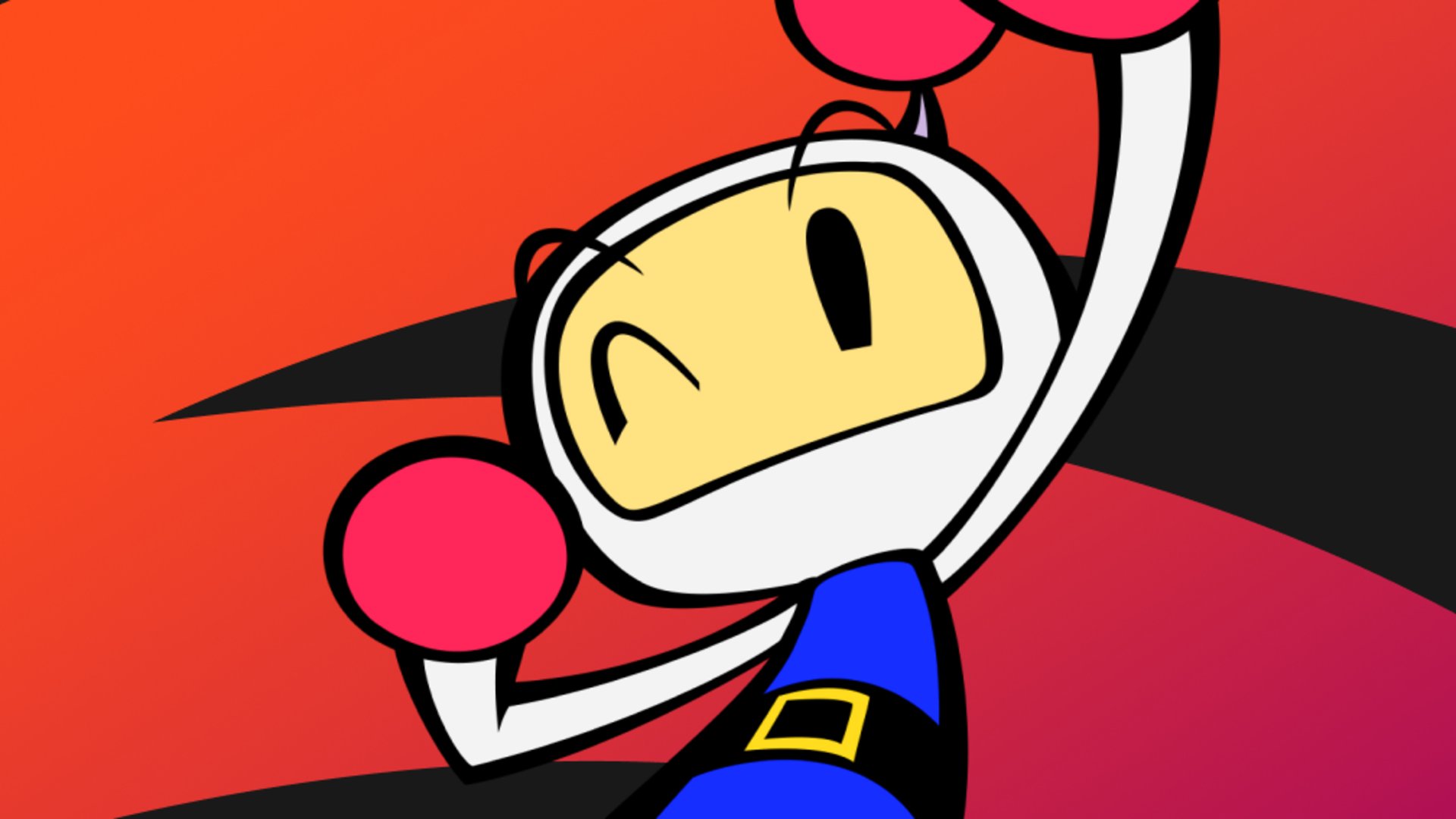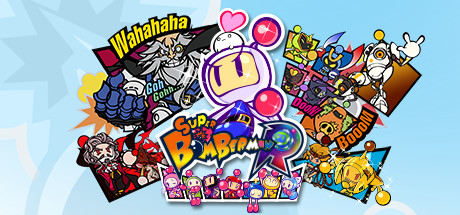| Bomberman Generation | |
|---|---|
| Developer(s) | Game Arts |
| Publisher(s) |
|
| Director(s) | Kotaro Hayashida |
| Producer(s) | Hidetoshi Endo Yoichi Miyaji |
| Artist(s) | Shoji Mizuno Kozue Narai |
| Composer(s) | Takahiro Nishi Shohei Bando |
| Series | Bomberman |
| Platform(s) | GameCube |
| Release |
|
| Genre(s) | Action-adventure |
| Mode(s) | Single-player, multiplayer |
Now Live - MaFia collab, playing 'Super Bomberman R Online' (Apr. 24 @ 21:00JST) Streams/Videos. Log in or sign up to leave a comment Log In Sign Up. View discussions in 1 other community. No comments yet. Super Bomberman R is the biggest Bomberman game ever! Story Mode A campaign playable alone or with a friend in local co-op. Join the 8 Bomberman heroes and help them to defeat the Evil Emperor Buggler! Battle Mode The classic and fun Battle Mode is back. Play with up to 8 players locally or 8 players online! Since its release in 1985, Bomberman has been a familiar party-battle game for many years. Now, Bomberman is coming back as “SUPER BOMBERMAN R” to Nintendo S.
Bomberman Generation (ボンバーマンジェネレーション, Bonbāman Jenerēshon) is a 2002video game released for the Nintendo GameCube. It was followed up by Bomberman Jetters.
Gameplay[edit]
Bomberman Generation consists of six worlds consisting of about five levels each. The levels involve puzzles, mini games, Pokémon-like battles using Charaboms who get befriended by Bomberman once defeated, and Charabom or bomb merge areas where a merge item and a bomb get fused or a Charabom and another Charabom get fused resulting in a stronger bomb or Charabom. Pommy (Pomyu) from Bomberman 64: The Second Attack and a few of his variations make appearances as Charaboms. The worlds have unique bosses each with a different strategy of defeating them. All of the worlds have puzzles that the player has to solve with bombs or Charaboms. Bomberman can acquire various power-ups which can increase his speed and his bomb power.
Bomberman Generation was one of the first titles to employ the style of cel-shading for the GameCube, a style utilized again in the follow-up game Bomberman Jetters.
The multiplayer mode resembles that of the classic games in that the players can no longer utilize full three-dimensional movement. The battles can consist of up to four human or computer characters. There are five different modes from which to choose:

- Standard Battle: This mode consists of classic Bomberman multiplayer where four players attempt to defeat one another by using bombs. Whoever is the last man standing wins. In the last minute of the battle, blocks drop along the edges of the arena, making it smaller and smaller until someone wins or time runs out, which ends in a tie. This mode has a variety of levels from which to choose, and the player can decide how often the power-ups appear.
- Reversi Battle: Bomb explosions flip the green floor panels to the color of whichever Bomber dropped the bomb. However, opponents can flip the panels previously flipped by other players. Whoever has the most panels matching their corresponding Bomber when time is up is the winner.
- Coin Battle: By blowing up treasure barrels, players attempt to find the most coins before time runs out. Being killed causes the player to lose half of their coins. As the match progresses, Hige Hige Bandits appear to steal the coins, but blowing them up releases the coins and additional power-ups.
- Dodge Battle: Bombers cannot drop bombs; rather, bombs fall from the sky, and everyone must avoid the explosions. Bombers are equipped solely with Bomb Kicks, Punches, and Speed-Ups to avoid the blasts. The blast area of each bomb is shown on the arena floor. As the match progresses, a variety of different bombs and patterns of bombs will fall.
- Revenge Battle: All Bombers are in Revenge Bomber mode, and get points depending on how many moles they can stun or blow up. The bombs only go as far as the cursor allows, and merely stunning the moles with a bomb does not give the player as many points as making one explode.
Plot[edit]
According to the game's opening scene, stories of the origin of the universe's power have circulated for years, but it was not until recently that the source of the power has been found. Six crystals, named the 'Bomb Elements,' are said to contain unfathomable, though unknown, powers. So Professor Ein sends a space freighter to retrieve them and return to Planet Bomber for analysis.
However, en route to Planet Bomber, the freighter is attacked by a hired gun and is destroyed. The Bomb Elements fall out but are sucked in by the gravitational pull of the nearby planet Tentacalls. Professor Ein receives word that the Hige Hige Bandits, led by Bomberman's arch-enemy Mujoe, are making large scale moves towards Tentacalls, and it turns out that they were the ones responsible for the freighter attack. Not only that, but the Bandits have allied themselves with Bomberman's rivals, the Crush Bombers, who are also on the move to get the Elements for Mujoe.
Professor Ein orders Bomberman to Tentacalls to defeat the Crush Bombers and the Hige Hige Bandits, and to get the Bomb Elements before they do, for if even one element falls into their hands, then the universe would be as Mujoe pleases. Thus begins Bomberman's latest chapter to restore peace and order to the galaxy.
Reception[edit]
| Aggregator | Score |
|---|---|
| GameRankings | 78.1% (35 reviews)[6] |
| Metacritic | 81% (19 reviews)[7] |
| Publication | Score |
|---|---|
| EGM | 8.33 out of 10[4] |
| GameSpot | 8.0 out of 10[1] |
| GameSpy | [3] |
| IGN | 8.1 out of 10[2] |
| Nintendo Power | 4.7 out of 5[5] |
| Publication | Award |
|---|---|
| Nintendo Power | Most Underrated Game of 2002 |
Bomberman Generation has a positive review ratio of 78% on GameRankings, including such web sites as IGN, GameSpot, and GameSpy, and including magazines such as Electronic Gaming Monthly and Nintendo Power.
It was a runner-up for GameSpot's annual 'Best Platformer on GameCube' and 'Best Game No One Played on GameCube' awards, which went respectively to Super Mario Sunshine and Sega Soccer Slam.[8]
References[edit]
- ^'Review'. GameSpot.
- ^'Review'. IGN.
- ^'Review'. GameSpy. Archived from the original on 2008-09-08.CS1 maint: discouraged parameter (link)
- ^'Bomberman Generation Review'. Electronic Gaming Monthly: 136. August 2002.
- ^'Bomberman Generation Review'. Nintendo Power.
- ^'Aggregate score'. Game Rankings.
- ^'Aggregate score'. Metacritic. Archived from the original on 2008-09-13.CS1 maint: discouraged parameter (link)
- ^GameSpot Staff (December 30, 2002). 'GameSpot's Best and Worst of 2002'. GameSpot. Archived from the original on February 7, 2003.CS1 maint: discouraged parameter (link)
External links[edit]
- Bomberman Generation at Hudson Soft (Japanese) on Wayback Machine
- Nintendo page on Wayback Machine
- Bomberman Generation at MobyGames
Super Bomberman is a great and popular video game featured as the first installment in the Bomberman series on the Super Nintendo Entertainment System. This is also the first four-player game to be released on the SNES, or Super Farmicon, as it is known in Japan.

The gameplay is very simple. It takes place on a single non-scrolling screen, and is based on a grid of 143 squares. The grid stops the movement of the little bomberman, so he can only move horizontally and vertically around the screen. The “A” buttom makes the bomberman to drop a bomb at his feet, which will pulse for few seconds (time in which the player has to run away) and then explored. The bombs shoot flames vertically and horizontally. The main idea behind the game is to use the bomb blasts to destroy walls and enemies.
Large chain reactions can also be produced, if the flame of a bomb hits another bomb. If the flame from any bomb hits the character it will injure, but most of the time kill the player, unless he is invincible, thanks to one of the surprise grids scattered around the map.

In the beginning of the game most levels are filled with destructible soft walls, which disintegrates if hit by a bomb. After the player makes way, he is able to move around and clear the other remaining walls. However, it would be smarter to leave some walls and to try to trap the moving enemies inside it and the bomb. It is impossible to walk past a bomb, so getting trapped between a wall and a bomb will most likely kill you, unless you have much space to hide into.
Some special items are scattered on the screen and can easily be picked up by the player. However, these items are first revealed after enemies or walls are destroyed. Bomberman is not only a game of killing enemies and destroying walls, but also a game of strategy.
Super Bomberman R Wiki
The “Battle Mode” is the most interesting way to play Bomberman. Up to four different players, human or controlled by a computer, can play in the Battle Mode of the SNES version (it is, however, required to have a multitap).
There are twelve themed stages and the battle takes place on one of them. The aim is to blow up the other players while staying alive yourself. The last player standing wins the round.
The game was really popular, although its ratings do not entirely show this. No less than 307 users voted the game on GameSpot and offered it a total average of 8.5 out of 10, which is not a bad score, but not fantastic either considered the game was very popular and appreciated.
Super Bomberman R 2
